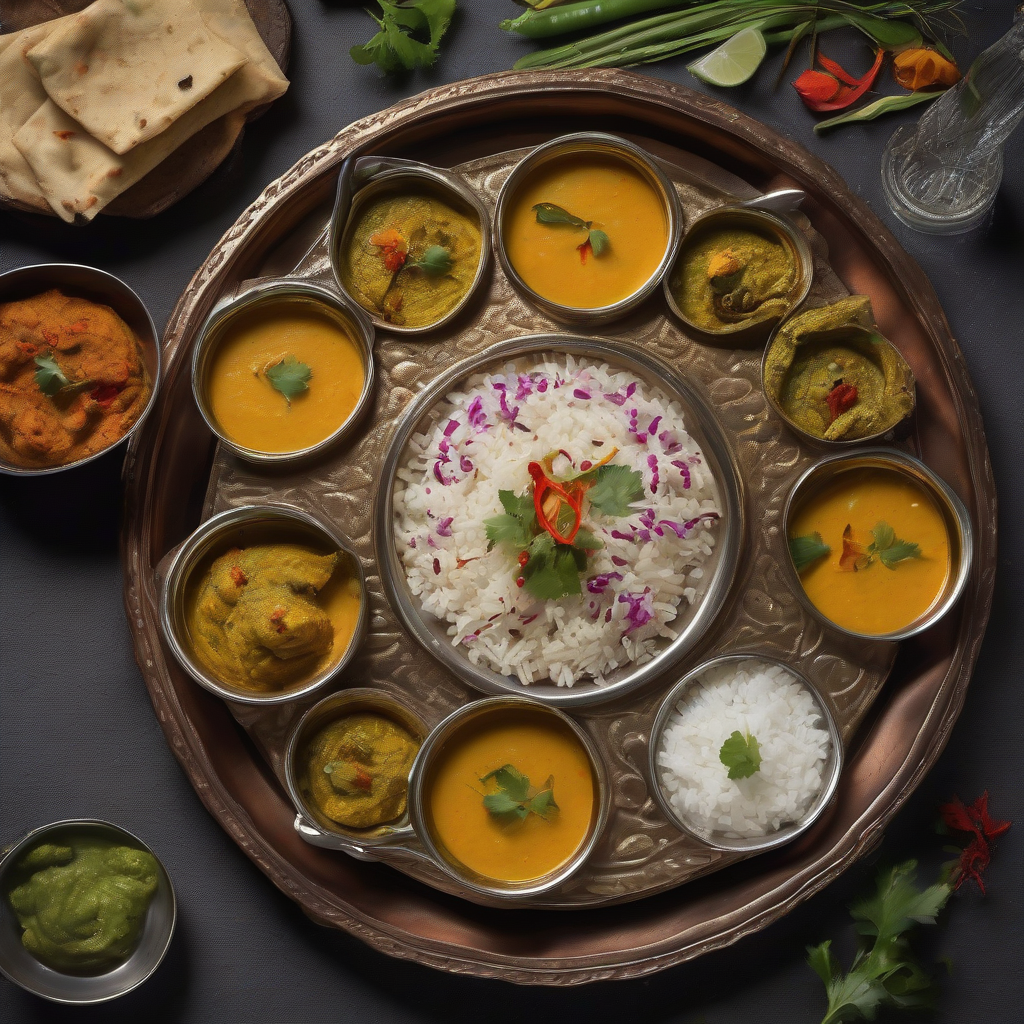Gundruk: Grandma’s Secret to Gut Health (and Deliciousness!)
Namaste, and Kem cho, my food-loving friends! Chef Curry Do’pyaza here, ready to share a truly unique and ancient treasure from the Himalayas: Gundruk! This isn’t your everyday saag paneer, folks. We’re diving deep into the world of fermented greens, a dish that’s both incredibly healthy and surprisingly delicious.
Gundruk holds a special place in the hearts (and stomachs!) of people in Nepal and the hilly regions of India, particularly Sikkim and Darjeeling. It’s a staple during the colder months, providing much-needed vitamins and warmth. You’ll often find it gracing tables during festivals like Dashain and Tihar, adding a tangy zing to the festive spread. Think of it as a flavorful reminder of simpler times, a connection to our roots.
A Little Trip Down Memory Lane
Gundruk isn’t some fancy, modern creation. Oh no! It’s been around for centuries, born out of necessity and ingenuity. Imagine a time before refrigerators. How would you preserve leafy greens from the bountiful monsoon season to enjoy them later in the year? Fermentation, my friends, is the answer! Our clever ancestors figured out how to transform excess greens into a nutritious and flavorful ingredient that could last through the winter. That’s the magic of Gundruk!
Let’s Get Cooking!
Ready to try your hand at making this delightful dish? Don’t worry, it’s easier than you think!
Preparation Time: 15 minutes
Cooking Time: 25 minutes
Ingredients:
- Gundruk (Dried Fermented Greens): 1 cup (You can find this at Indian grocery stores or online)
- Pyaaz (Onion): 1 medium, finely chopped
- Tamatar (Tomato): 1 medium, finely chopped
- Hari Mirch (Green Chilies): 2-3, finely chopped (adjust to your spice level!)
- Adrak-Lahsun Paste (Ginger-Garlic Paste): 1 teaspoon
- Jeera (Cumin Seeds): 1 teaspoon
- Haldi Powder (Turmeric Powder): ½ teaspoon
- Lal Mirch Powder (Red Chili Powder): ½ teaspoon (optional, for extra heat)
- Dhaniya Powder (Coriander Powder): 1 teaspoon
- Tel (Cooking Oil): 2 tablespoons (Mustard oil gives a fantastic flavor!)
- Hara Dhaniya (Fresh Coriander Leaves): For garnish
- Namak (Salt): To taste
Instructions:
- Rehydrate the Gundruk: First, we need to wake up our sleepy Gundruk! Soak it in warm water for about 15-20 minutes. This will soften it and remove excess salt. Squeeze out the water completely.
- The Tadka Begins: Heat the oil in a kadhai (wok) or a deep pan over medium heat. Add the jeera and let it splutter, releasing its aromatic oils.
- Onion Time: Add the chopped pyaaz and sauté until they turn a beautiful golden brown. This is where the magic starts!
- Spice it Up: Add the adrak-lahsun paste and sauté for another minute until the raw smell disappears. Then, add the chopped tamatar and cook until they soften and become pulpy.
- Masala Magic: Now, it’s time for the spices! Add the haldi powder, lal mirch powder (if using), and dhaniya powder. Sauté for a minute, stirring constantly to prevent burning.
- Gundruk Enters the Stage: Add the squeezed Gundruk to the pan and mix well with the masala. Cook for about 10-15 minutes, stirring occasionally, until the Gundruk is well coated and the flavors have melded together beautifully.
- Simmer and Serve: Add about ½ cup of water, bring to a simmer, and cook for another 5-7 minutes. Adjust the salt to taste.
- Garnish and Enjoy: Garnish with fresh hara dhaniya and serve hot!
Chef Curry’s Tips for Gundruk Perfection:
- Taste as you go! Adjust the spices to your liking. Gundruk can be quite tangy, so balance it with the other flavors.
- Don’t overcook the Gundruk. You want it to retain some of its texture.
- Mustard oil is your friend! It adds a unique and authentic flavor to the dish.
- If you want a richer flavor, add a dollop of ghee (clarified butter) at the end.
Cooking Variations:
- Pressure Cooker: For a quicker version, you can pressure cook the Gundruk after adding it to the masala. Cook for 2 whistles on medium heat.
- Slow Cooker/Crockpot: This is a great option for a hands-off approach. Simply combine all the ingredients in the slow cooker and cook on low for 4-6 hours.
- Instant Pot: Use the sauté function to prepare the masala, then add the Gundruk and water. Cook on high pressure for 5 minutes, followed by a natural pressure release.
- Stovetop: Follow the original recipe for a traditional cooking method.
Nutritional Information (Approximate per serving):
Gundruk is packed with probiotics, vitamins, and minerals! It’s great for gut health and boosting your immune system. It is also rich in iron and fiber. Calorie count is low, making it a healthy and delicious addition to your diet.
Serving Suggestions:
- Serve Gundruk with steamed rice for a simple and satisfying meal.
- Pair it with roti or paratha for a more substantial meal.
- Enjoy it as a side dish with dal and sabzi.
- Use it as a filling for momos or dumplings for a unique twist.
So there you have it! Gundruk, a delicious and nutritious dish with a rich history. It’s a taste of the Himalayas right in your own kitchen.
Now, my dear readers, it’s your turn! Go forth, try this recipe, and bring a little bit of Nepali sunshine into your homes. Share this flavorful dish with your friends and family. They will be delighted!
